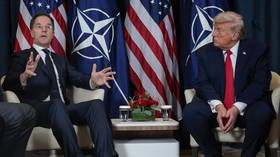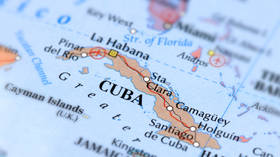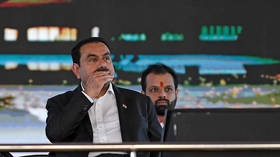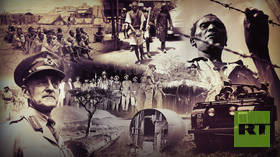Failed Syrian rebel training program cost US taxpayers $2 million per fighter – report
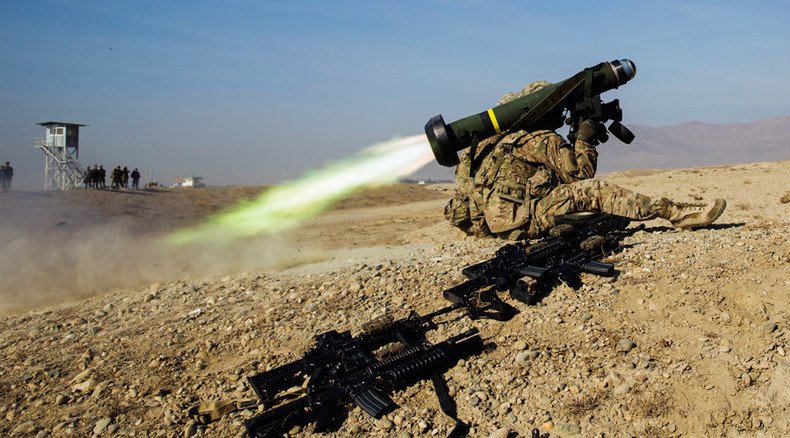
Newly acquired documents show the Pentagon spent nearly $400 million, or $2 million per fighter, on its failed train-and-equip program, according to USA Today. The Pentagon claims the actual cost was $30,000 per trainee.
USA Today reported the train-and-equip program was abandoned after the department had already spent $384 million on it. “Of the 180 Syrians vetted, trained and equipped, 145 fighters [remained] in the program,” the report stated. Of those 145 fighters, 95 were in Syria.
When asked to comment on the findings, the Pentagon disputed that it had spent $2 million per fighter, saying the actual cost was far lower – $30,000 per trainee. They added that the “vast majority” of the funds had gone to buying weapons, equipment, and ammunition, of which some was is still in storage.
“Our investment in the Syria train and equip program should not be viewed purely in fiscal terms,” Navy Commander Elissa Smith told the news outlet in an email. Smith said some of those trained fighters had been calling in air strikes, and that ammunition designated for trainees had been given to other forces fighting the Islamic State instead.
Pentagon spent $384m ($2.13m per fighter) to train 180 Syrians to combat ISIS before ending program. https://t.co/EnSSUZy50Z#military
— bored2tears (@bored2tears) November 5, 2015According to the documents outlining the program’s $501 billion budget, $204 million was supposed to be spent on ammunition, $77 million on weapons, $62 million on mobility, $47 million on services, $46 million on construction, $40 million on strategic lift/shipping, $13 million on equipment, $6 million on communications, and $6 million on facilities and maintenance.
The program was intended to graduate 3,000 trained and equipped New Syrian Forces fighters in 2015, and 5,000 annually afterwards, to combat Islamic State (IS, formerly ISIS/ISIL). However, President Barack Obama abandoned the program earlier this fall.
In documents and interviews, USA Today was able to confirm that two of the four training camps designed for the program never hosted even a single recruit.
In September, it was revealed that one group of trainees had surrendered one quarter of their US-supplied weapons, ammunition, and vehicles in exchange for safe passage through territory held by another rebel group, considered to be extremist.
While the training has stopped, the US will continue to give equipment and weapons to the leaders of ‘vetted’ groups of rebels who are already fighting IS “so that over time they continue to re-claim territory,” Smith told USA Today.
Obama says he was ‘skeptical’ of #Syria rebel boondoggle from the start http://t.co/Jt1vlIReIc#ISISpic.twitter.com/scoryBaY9p
— RT America (@RT_America) October 12, 2015The rebel training program’s $500 million budget was in addition to the $42 million the Pentagon had already spent in 2014 to set it up.
The findings come as the Obama administration announced it was set to deploy up to 50 US special operations troops in northern Syria to assist in the fight against IS. It marked the first time the administration openly said it would send ground forces into Syria.
BREAKING: A small contingent of US special forces to be deplyoed to Syria - Reuters https://t.co/PE0amzcPxTpic.twitter.com/JsUI0Zcten
— RT America (@RT_America) October 30, 2015The Associated Press reported the White House has put no timetable on how long the American forces will stay in Syria, although Obama has previously said he expects the campaign against IS to last beyond his presidency.
Obama inherited two military conflicts and will hand off a third to his successor. He recently announced plans to maintain a troop presence in Afghanistan beyond 2015.
In July, the National Priorities Project, a non-profit, non-partisan federal budget research group, reported that America’s war in Afghanistan has cost taxpayers roughly $4 million an hour. Their research found more than $700 billion has been spent on the war since the George W. Bush administration authorized the invasion in 2001, including more than $35 billion in fiscal year 2015.
Afghan war costs American taxpayers $4 million per hour – study http://t.co/loJX8xb2Lepic.twitter.com/7mCBTogOq1
— RT America (@RT_America) July 14, 2015The initial budget for the Afghan war was over $20 billion for 2001/02. The budget dropped to $14 billion over the next two years as spending shifted to the war in Iraq. Expenditures on the Afghan war took a back seat to Iraq war spending before ballooning to more than $100 billion in 2010, when the cost of the Iraq war began to decline. Spending in Afghanistan continued to top $100 billion annually until 2013, when it began falling by increments of $10 billion, finally reaching its current budget of $35 billion.
LISTEN MORE:


